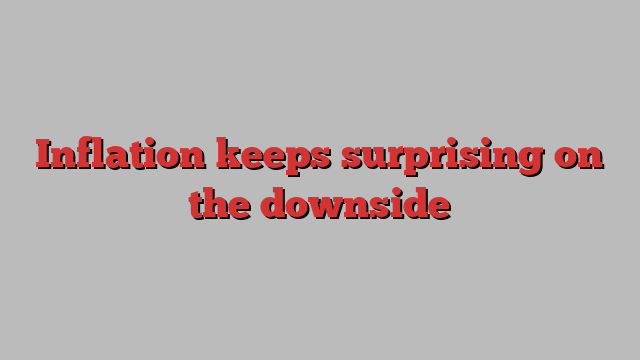
Unlock the Editor’s Digest for free
Roula Khalaf, Editor of the FT, selects her favourite stories in this weekly newsletter.
Do you remember when the FT was reporting constantly on inflation being higher than expected? Now it’s the opposite.
The majority of inflation data for October came in lower than expected, marking a big drop from peak levels in 2022. Flash eurozone inflation figures for November — which dropped more sharply than the consensus expected, to 2.4 per cent from a peak of 10.6 per cent in October 2022 — suggest the pattern is likely to be repeated for the most recent month.
Analysing worldwide price growth data for October against economists’ forecasts polled by Reuters, we found that 53 per cent of the readings were lower than expected and another 25 per cent was in line with consensus. These included a steeper fall than anticipated in the annual price growth for the UK, the eurozone, the US, Mexico, Australia, the Philippines and China.
In many countries, inflation is being driven down by the year-on-year change in energy prices. In the eurozone, energy inflation contracted by more than 11 per cent for two consecutive months and it dropped to minus 15.7 per cent in the UK in October.

However, core annual inflation, which excludes food and energy, was also lower than forecast in many countries including the US, the UK, Indonesia and Japan. The same story is true for import prices or producer prices. The annual change in the US producer prices for final demand, for example, dropped from 2.2 per cent to 1.3 per cent in October, lower than the 1.9 forecasts by analysts.
The trend for the first November data is even more stark, with 78 per cent of the data coming in lower than forecast. In November, Italy’s inflation dropped more than expected to only 0.7 per cent, joining other four countries with a rate below the ECB’s 2 per cent target. On the harmonised inflation measure, Belgium was in deflation for the second consecutive month.
Kamil Kovar, a senior economist at Moody’s Analytics said that in the eurozone: “it is starting to look that, before long, we will be talking about inflation being too low, rather than too high.”
Inflation overshoots for most of the last year had encouraged policymakers to constantly revise up their forecasts. The Bank of England, for example, increased its average inflation expectations for the final quarter of 2024 in most of its monetary policy reports of the last two years, jumping from just 1.4 per cent in August 2022, to 2.1 per cent in February, to 3.4 per cent in its latest November’s publication.
Markets have been quick to price in earlier interest rate cuts from the major central banks. Instead, policymakers will stick for some time to their narrative that interest rates will have to stay high for longer, some economists say. This is because they are still concerned about strong wage pressures, but also because they want financing conditions to ease too early.
But eventually, they will adapt to market expectations if the undershooting continues, warned Susannah Streeter, senior investment and markets analyst at Hargreaves Lansdown.
“Central banks have been caught out on their expectation of inflationary pressures before, and despite initial resistance have slowly turned policy around to market expectations,” she said.